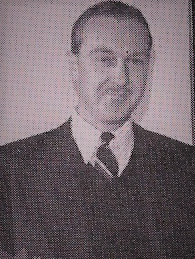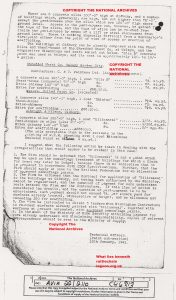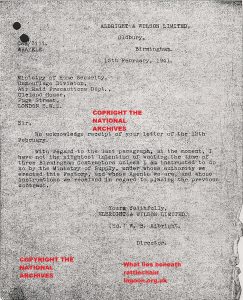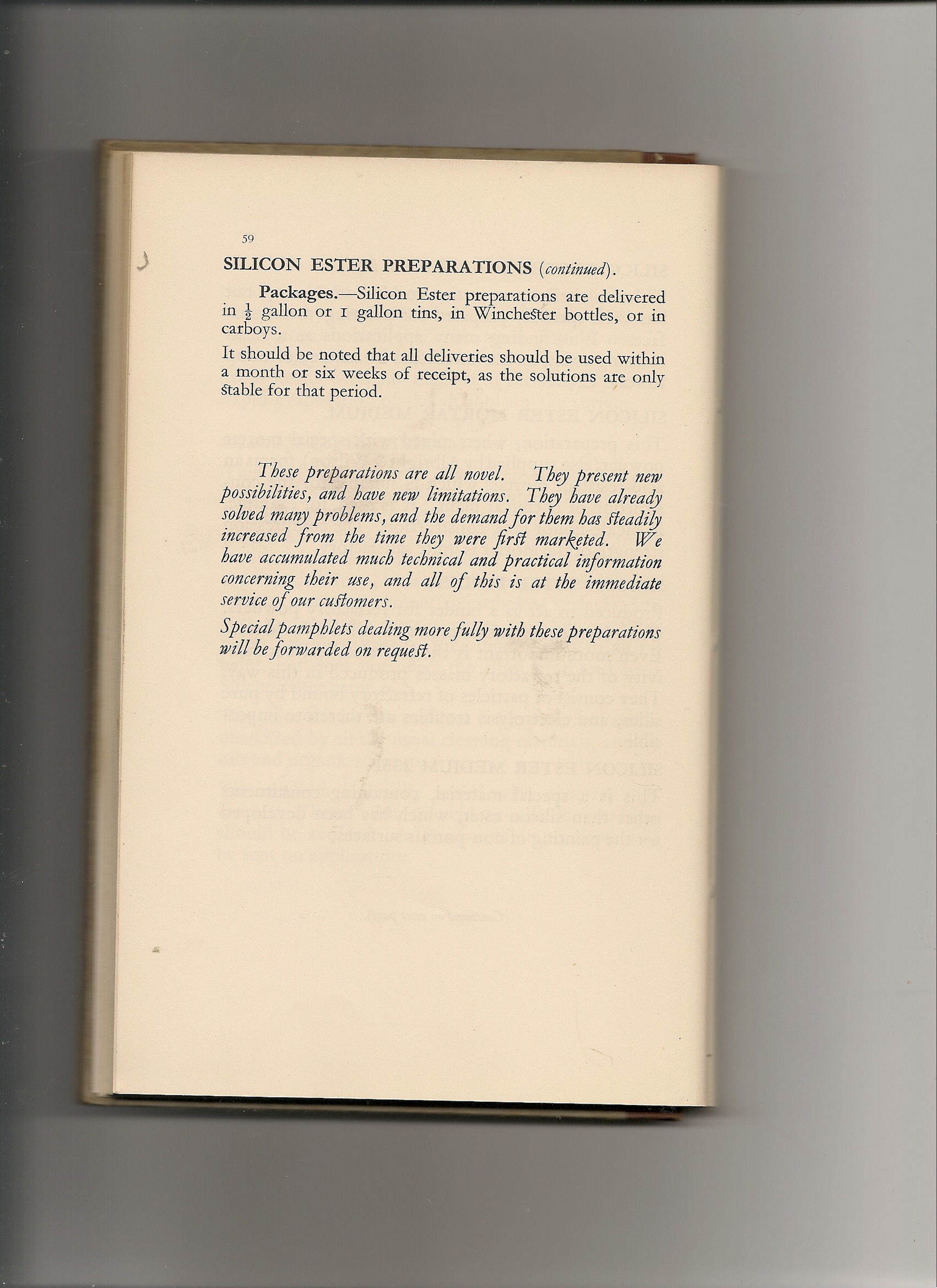The grandson of Arthur Albright played a considerable role during the war years at Albright and Wilson. Richard Threlfall in 100 years of phosphorus making gives a brief biography.
“..born in 1907 and educated at Charterhouse and Faraday House Engineering College London. He came to Oldbury in 1931 as Electrical Engineer, was transferred to Widnes in 1934 and returned to Oldbury in 1939. He joined the board in 1937 and was appointed Managing Director in 1942.”
Not included in the discussion or in any local history books that we have seen that expound the virtues of the company during WW2 is how Mr Albright managed to dodge the conscription draft introduced in May 1939 before the war. At the age of 31, was it a gammy leg, or was the white feather flag of Quaker cowardice waved when the winds of war were stirring? Either way, a man of considerable privilege, certainly did not appear to be too concerned with manufacturing P4 that would rain down as a fire storm in Dresden killing thousands- and profitting from the war to the tune of brand new phosphorus furnaces after the war.
We have looked closely in the National archives concerning both his and Albright and Wilson’s activities. What can be revealed is a man of extreme arrogance and self importance, who saw his works as the focal point of activity in Oldbury and the hub for which all should revolve around.
A typical example is provided by the camouflaging of the newly constructed MOS factory. As the only UK phosphorus producers, the works were an obvious war target for German bombers. A direct hit would have yielded a significant blow to Britains’ fortunes in the early part of the war, when weapons were in short supply, and when America had yet to commit to engage in a foreign war going on from a distance.
It was therefore essential that these buildings were adequately protected by trying to disguise them. Documents in the National Archives reveal that what took place was Albright defying the correct protocol in using a substandard type of paint for the purpose known as “silicaseal.” Local contractors were also to be used with a standard three being required. Moreover not only was this paint greatly more expensive than the recommended type, (AW were reimbursed by putting in claims to the Ministry of Home security and the Ministry of Supply), but the firm that made silicaseal were in fact a former Albright and Wilson subsidiary. They also used a firm based in London called Minter to undertake the work. The upshot of this is that this firm used its own brand of substandard paint, not fit for purpose, at cost, which itself could claim back from the cash strapped Government Department. Where some suffered hardship during the war years, Albright and Wilson did not.
Document AVIA 22/2110 reveals
“Silicaseal” is a spirit based paint, of alcohol base, with pigment added. It is not an approved paint, in that its manufacturers are not in the Federation Scheme.
It costs 15/- per gallon and is manufactured by Messrs. Silicaseal Ltd, Halifax House, London, a subsidiary company of Messrs. Albright and Wilson’s, so I was informed by Mr Hughes.” (Resident engineer)
In the detailed report dated 16th January 1941 The Technical officer (paint sub section) attempts to exact the reasons for the “certain irregularities of procedure and excessively high expenditure incurred and to be incurred in camouflage painting of the buildings at Oldbury. The estimate submitted by the firm on 30/2/40 was, in many respects unusual and called for closer scrutiny than normal.”
Paying a visit to Oldbury the officer is met with a barrage of excuses from W.B Albright, who accompanied by Hughes appears to give a Captain Mainwaring performance, he was after all by this time a self appointed Lieutenant officer of AW’s Home Guard. These can be read in the report below, whereby Albright and Wilson are recommended to put right their “irregularities of procedure”. It exposes his dishonesty.
©Copyright The National Archives- reproduced by permission to
http://whatliesbeneathrattlechainlagoon.org.uk/
A letter dated 12th February from the Ministry of Home Security to Albright confirms the line of the department.
“Having regard to the apparent total disregard of the instructions issued by the civil Defence Camouflage Establishment dated 28th June last, concerning the procedure to be followed by your company in connection with the camouflage scheme in question this Department has no alternative but to recommend the Ministry of Supply to disclaim any responsibility on their part for payment in respect of that portion of the work already undertaen apart from the treatment of areas of R.P.M sheeting with one coat of Bituminous Emulsion Paint @5 d. square yard which is the only acceptable item in Messrs. Minters estimate.”
It also stated that AW should obtain 3 contractors to retreat areas alraedy painted with silicaseal using approved paint and any work undertaken already was a matter between AW and Minters to settle.
Albright’s curt reply in writing of 13th February 1941 projects the inflated controllers pomposity in full flow.
“With regard to the last paragraph, at the moment, I have not the slightest intention of wasting the time of three Birmingham Contractors unless I am instructed to do so by The Ministry of Supply, under whose authority we erected this factory, and whose agents we are, and whose instructions we recieved in regard to placing the previous contract.”
©Copyright The National Archives- reproduced by permission to
http://whatliesbeneathrattlechainlagoon.org.uk/
He also sent a copy of the letter to T.N Blockley of the Ministry of Supply, also dated 13th February 1941. In the final paragraph he confesses:
“I had to restrain myself otherwise I am afraid I should have gone on for about three pages which would be just as much a waste of paper as Contractors would put in in re-estimating for this job.”
The header of the letter on Albright and Wilson notepaper reads “KINDLY NOTE OUR TEMPORARY ADDRESS HALIFAX HOUSE, STRAND LONDON WC2.”
N.B THE SAME ADDRESS AS “SILICASEAL LTD.”
DISGUISED MANUFACTURE
Albright and Wilson manufactured Silicon esters resulting from work undertaken in silicon chemistry during the 1st World War. Silicon tetrachloride was not as good a smoke screen agent as white phosphorus.
The company document “The products of Albright and Wilson” from 1933 confirms the painting use that they could be put to- though it does not acknowledge their poor use. Note “It should be noted that all deliveries should be used within a month or six weeks of receipt, as the solutions are only stable for that period.”
The National Archives documents confirm that Albright and Wilson had been sent full instruction to obtain 3 local contractors, not proceed with unauthorised paints, and to obtain advice or permission should any unforseen circumstances arise. W.B ALBRIGHT AND HIS COMPANY DID NONE OF THESE. Furthermore the report which Albright so summarily dismissed was revisted in a visit to the Factory on 9th April 1941 and commented on in a letter dated 21st April 1941 from The Ministry of Home Security to The Ministry of Supply.
“The condition of the paintwork as such is unsatisfactory in that all colours have weakened very considerably, the failure being consistent with either inadequate sealing or with instability of paint film which now appears “washed out”. In addition, over part of the areas, the paint film has pealed off the surface of asbestos sheeting and is no longer effective…..
Repainting of all previously painted surfaces will be necessary to produce the colour effect specified in the scheme.”
In not following instructions AW and W.B Albright
- Put the lives of those at the factory in danger with substandard camouflage
- Risked the integrity of the newly built MOS factory
- Risked the lives of local people of Oldbury and Langley making the whole district a giant target. Though other areas in the Blackcountry fared worse with bombing, Albright and Wilson got away with it. But it could have been a very different story if left to W.B Albright’s shoddy preference to line his canvas pockets with a sub standard paint.
- Asbestos and silica- what a health conscious pallet that was!
In an Albright World article concerning former long serving employees at the company, there is the typical brainwashed rose tinted recollections that have latterly been used to pad out some local history books and articles about the company.
His personal chauffer who was apparently kitted out with a grey uniform, (no Jack boots LOL) recalls ” ‘I well remember when he bought his first Rolls Royce Silver Cloud….. We always used to go to Scotland for a fortnight’s grouse shooting in August each year and on two occasions I drove him on holiday.’ “
” ‘Bill Albright, Wilson Carter and Alf Loveless had a big hand in the production of phosphorus wafers and deckers” remembers retired laboratory manager Bob Baker. ‘The wafers were used to destroy crops, forest and other areas that could have been used for enemy camouflage, and there was quite a panic to find machinery and labour to do the work. Bill Albright played a large part in organising the production’ ”
Perhaps it would have been better for the war effort if Albright had gifted the Germans the entire contents of “Silicaseal” to use as camouflage, by arranging the shipment and coming “in peace” with a personal visit. At least then the RAF would not have missed their targets using this useless AW paint, and maybe not wasted their time dropping useless AW phosphorus weapons that didn’t work.
Albright served as managing Director of the company between 1942 and 1955 and remained on the AW board until 1978. He died in 1989 aged 81. We wonder what role he played with regard to rattlechain lagoon- given this crucial time frame. It has always been stated by Rhodia that this was “the recommended method” for dealing with phosphorus contaminated wastes. We wonder if it was his “bright” idea at saving money- as is theirs in 2013 to camouflage the lake’s toxic contents with cover and sand so that it cannot be seen from above.









